Please welcome Meredith from Homegrown Friends, who is sharing a super sensory art and math idea, exploring texture and shape through collage.
Texture Shape Art Collages
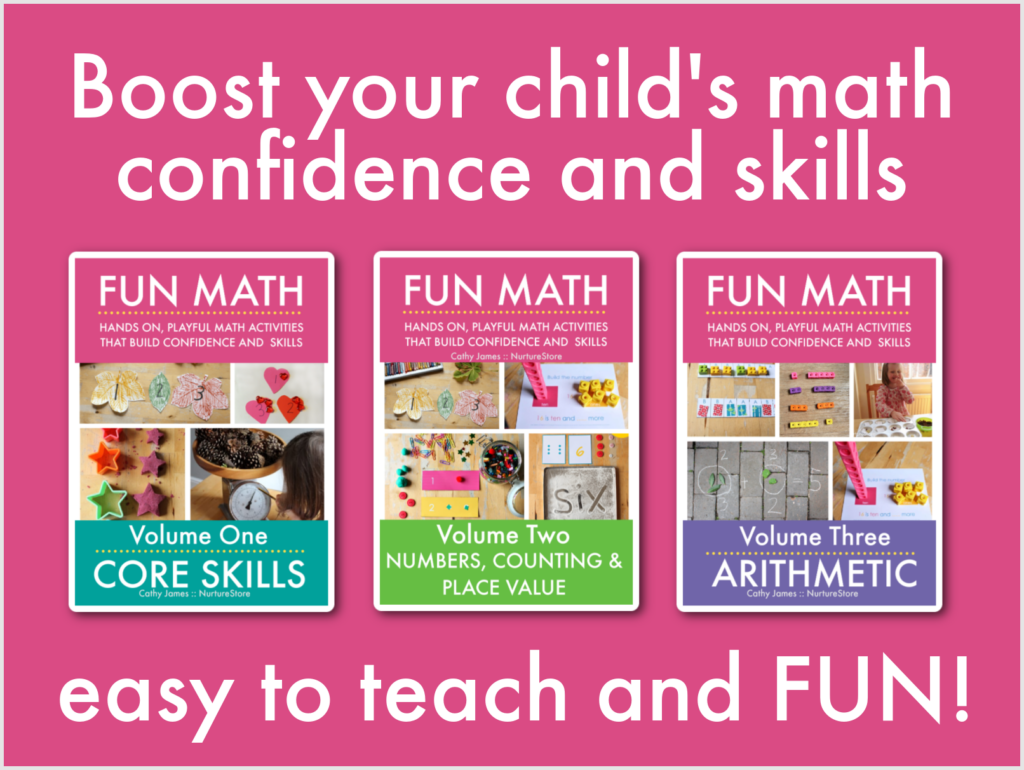
Magic Fun Math lessons!
Fun Math is an easy to teach, highly effective math curriculum based on play and hands-on learning.
All the lessons are designed to be fun and memorable, so children enjoy their lessons and feel confident.
The lessons are easy for teachers and parents to use, in class or at home.
These are the magic lessons where children really see, understand, and can apply math concepts. They are especially suited to children who don’t like math, lack confidence, don’t understand math the way they are currently being taught, or just want to play.
SEE MORE AND TRANSFORM YOUR MATH TEACHING HERE.
I love creating activities for children that combine multiple areas of study. These Texture Shape Art Collages are a fun, tactile way to explore simple shapes with children. This process-based art activity is a perfect introductory mathematical exploration for children.
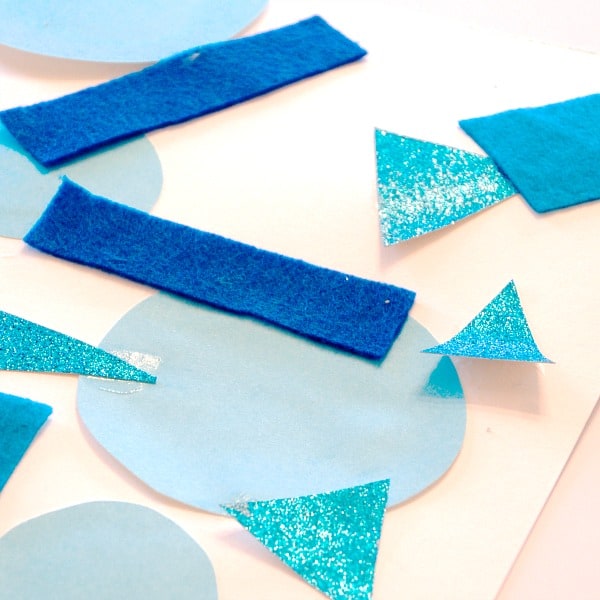
Areas of Development
- mathematics (shape exploration, counting)
- sensory exploration (describing and feeling different textures)
- language exploration (discussing shapes)
What You Need For The Texture Shape Art Collages
- different textured papers cut into a variety of shapes (I used rough, glitter paper, soft felt and smooth card stock)
- glue
- thick paper or cardboard for the collage base (I used watercolor paper)
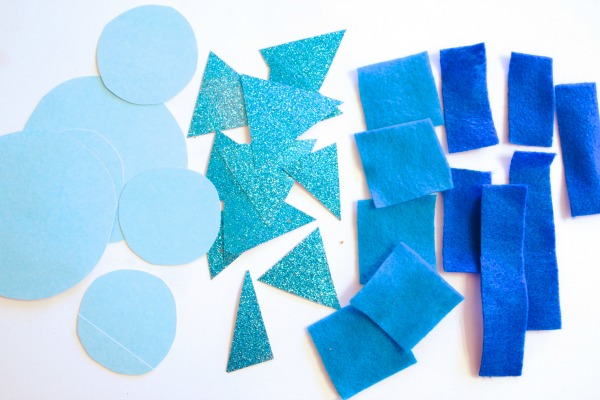
How To Introduce The Texture Shape Art Collages
Prior to introducing the activity cut out shapes of varying textures and sizes. Because I wanted the focus of this activity to be on shapes and textures I made all of the paper varying shades of blue. When cutting the shapes I wanted them to be a variety of different types of triangles and rectangles and different sized circles and squares.
Each child received a sheet of watercolor paper, a small dish of white glue and a brush (you could also use a glue bottle, but I find a brush helps control the large pools of glue that can happen) and access to the various shapes.
This is a process-based art activity so the emphasis should be on what the children are doing versus the end result. While the children work focus the language on what you see. “Look at the way the edge of your triangle is curling up.” “I notice your large circle is half way off your paper.” Give children ample time to explore the materials in their own way. “How many triangles are you using?” “How does the rectangle feel?”
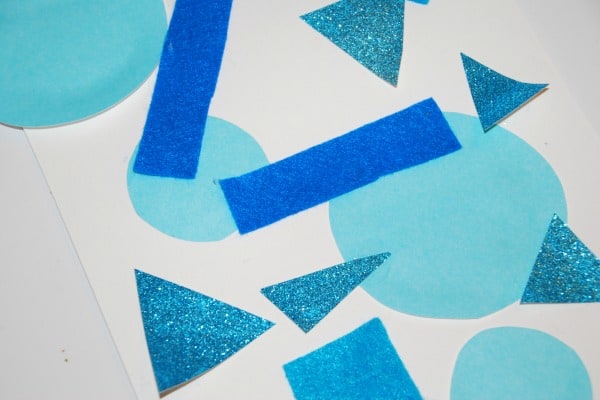
At the end of the art experience you can explore the children’s work together as a group. Give children the option of describing their own work. As an extension to the Texture Shape Art Collages you could have the children graph the number of different shapes they used. Who used the most triangles? Who used the least squares. Display the children’s work in the classroom or home setting for further exploration and discussion.
More resources for playful math
Introduction to Block Building
Teaching Math Through Movement
Ways to Play with Plastic Cups
Meredith Magee Donnelly, MS, Ed is an Early Childhood Educator, mother of three and creator of the blog, Homegrown Friends, a site focused on play-based learning activities. Prior to becoming a mom Meredith taught Kindergarten in New York City and now focuses her attention on raising three energetic kids and sharing her love of hands-on learning. Stay connected by following Homegrown Friends on Facebook, Pinterest and Instagram.
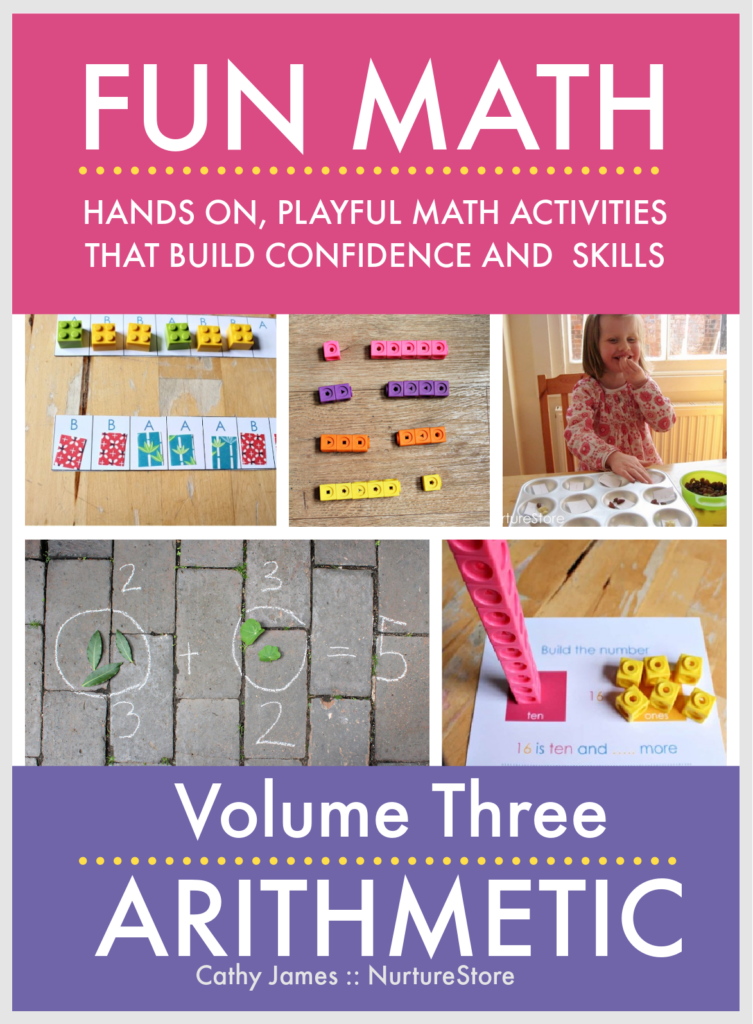
Transform your teaching with Fun Math
The Fun Math series gives you a math curriculum that is easy to teach and highly effective.
Children love these lessons because they are engaging and fun.
You'll have a clear set of ready-made math lessons and activities that are simple to lead using our step-by-step lesson guides, and which children really understand.
Be the best math teacher and boost your children's confidence and skills with Fun Math.
See more and transform your teaching here.
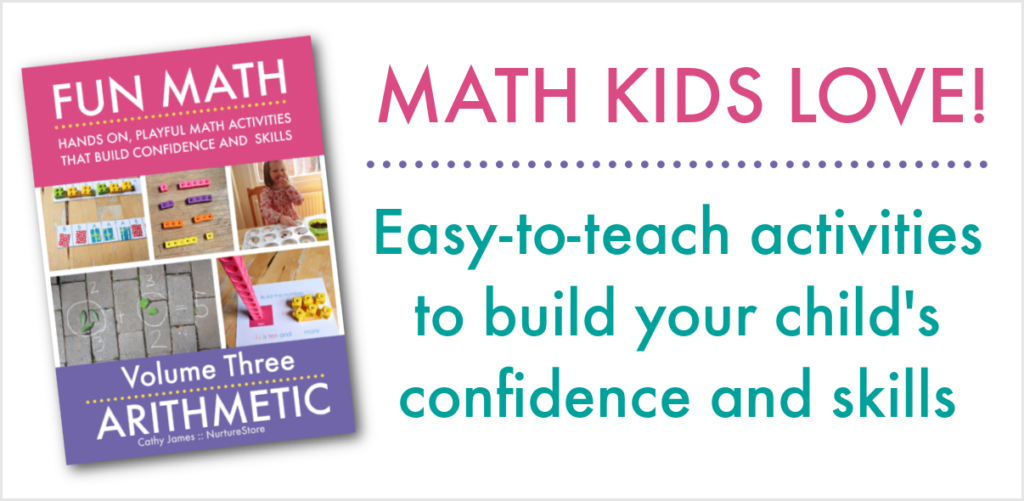




So happy to participate Cathy! Thanks for having me!